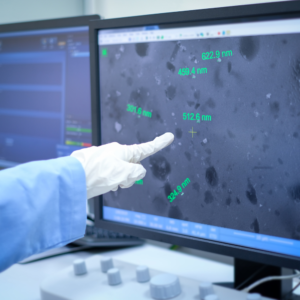What are nanomaterials for?
Nanomaterials are nano-sized particles, meaning they measure less than 100 nanometres. These particles are very interesting for their unique properties, which depend on their small format. Nanomaterials can be used in a variety of applications, such as the production of new materials, devices and systems. For example, they can be used to produce stronger materials with unique properties such as elasticity or rust resistance. They can also be used to create smaller, more efficient devices such as acoustic transducers or temperature sensors. In addition, nanomaterials can be used in the production of high-performance drugs and in the production of miniaturized medical devices. They can also provide better efficiency in eliminating smog and air pollution, as well as strengthening car and building structures. Finally, they can be used to improve the quality and properties of food products. The advantages offered by nanomaterials are numerous and diverse. It is a rapidly growing field that promises to change our lives in the future through innovative and efficient applications.
Nanomaterials consist of particles smaller than 100 nanometers, which represent a much smaller size scale than conventional materials. Their production can take place in different ways, but the most widespread technology to form them is atomization. This is done by vaporizing a liquid or solid inside a device called an atomizer. The liquid or solid is converted into tiny droplets that cool quickly and settle on a substrate. The particles produced can be very small and uniform, making them suitable for many applications. Other technologies used for the production of nanomaterials include chemical reduction in solid phase, extraction from polymer solutions and thermochemical synthesis. In all these cases, the properties of the nanoparticles are influenced by the production process used and can be modified during the production process itself.
What characterizes a nanomaterial?
The properties of a nanomaterial are often very different from those of the original constituent material, since its minimum size can affect the physical, chemical and biological properties. Nanomaterials can be classified according to their shape, such as powders, fibers, thin films, nanoparticles dispersed in a liquid (colloidal solutions) or other more complex materials. The properties of nanomaterials also depend on their geometry, such as morphology, aggregate granules or crystal structure. The properties may also vary depending on the chemical composition of the surface of the nanomaterial. In addition, the physical properties of nanomaterials are determined by the amount of kinetic energy that is transferred between adjacent particles. This energy also depends on the interactions between the different types of atoms and molecules present in the material. Ultimately, the characteristics that make a nanomaterial unique are its nano-scale size, shape and chemical composition. The combination of all these elements will determine its final physical and chemical properties.
What are nanomaterials?
Nanomaterials can be made by combining different substances, such as polymers, coal, metals and other materials. They can also be created by handling existing materials, such as changing the size of a sand granule. The most important feature of nanomaterials is that their chemical and physical properties change significantly with the reduction in size. Due to their small volume, nanomaterials have a high surface area per unit volume, allowing them to react faster than larger volume materials. These characteristics make nanomaterials particularly useful in various fields, such as medicine, electronics, biology and chemical engineering.
INAIL nanomaterials
Nanomaterials are particularly fine substances that can be used in various industrial sectors. Their use has become increasingly widespread in recent years, but it is necessary to know the safety and prevention measures taken to avoid risks to the health of the worker. The National Health Service and INAIL (National Institute for Insurance against Accidents at Work) have defined a series of guidelines aimed at protecting workers exposed to nanomaterials. The main measures include the assessment of safety in the workplace and specific training on the use of the substances in question. In addition, personal protective equipment such as gloves, overalls, masks and goggles are provided to protect employees from possible risks. INAIL also provides assistance to entrepreneurs through loans aimed at adapting current legislation on corporate safety. It is therefore a valid tool to reduce the risks associated with the use of nanomaterials at Italian companies.
 Agevolazioni
Agevolazioni
 Events
Events